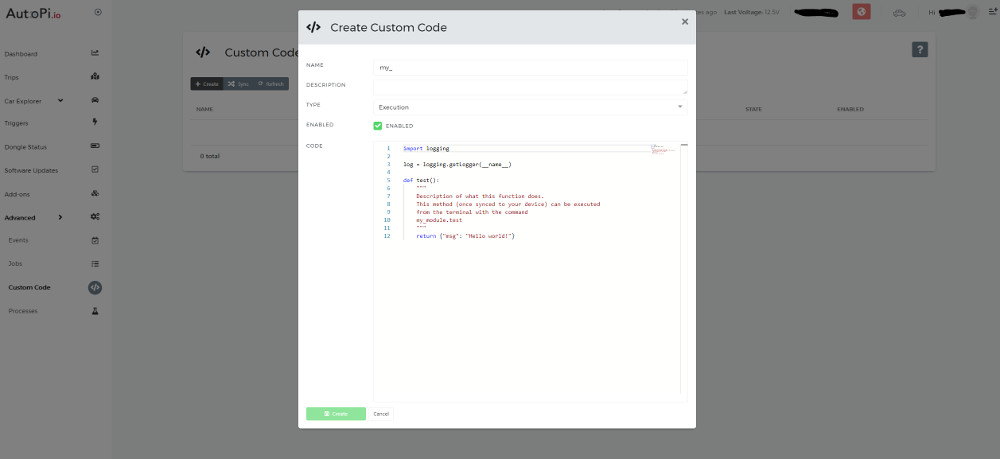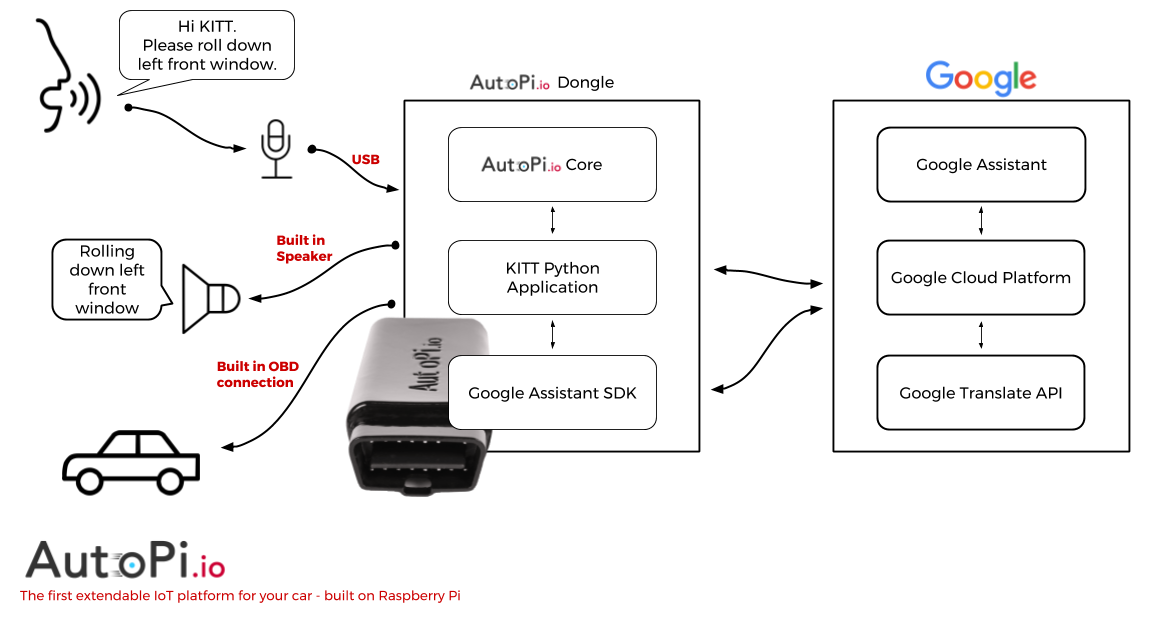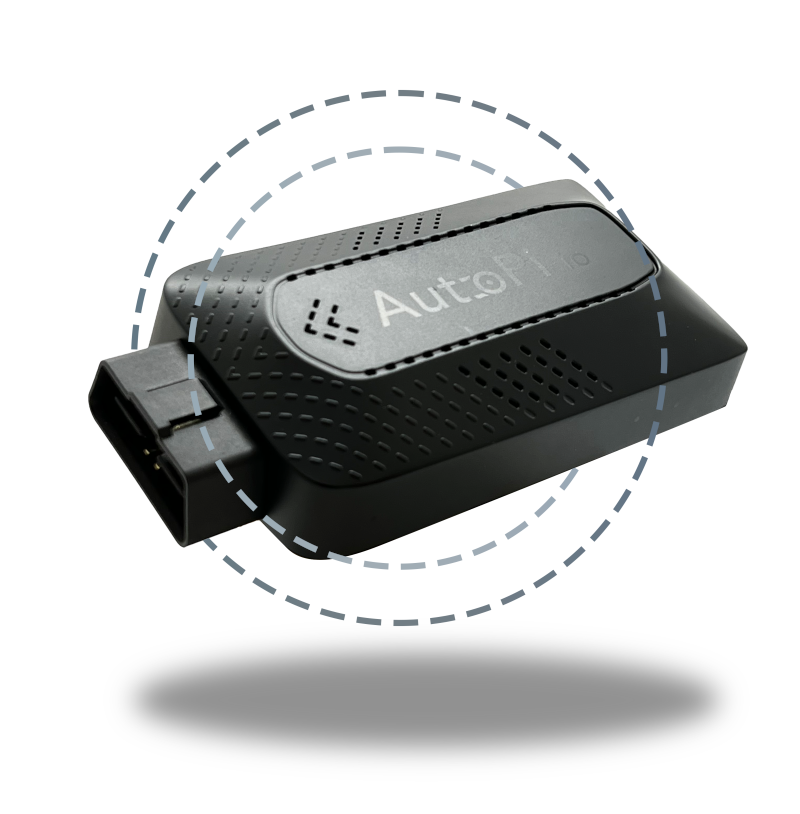What if you could give your car commands?
We remember our childhood in the last millennium when Michael Knight (David Hasselhoff) and his intelligent car Pontiac Trans Am named K.I.T.T. solved crimes together.
Talking cars is a dream of many car enthusiasts. Fortunately, due to AutoPi TMU's features, you can obtain a talking car yourself.
It is possible to get audible alarms from your car and give it commands at the same time. Therefore, it can improve the driver experience, and improve the efficiency and safety of the driver, as well as the passengers.
Did you know? K.I.T.T. is short for Knight Industries Two Thousand.
While we may not be able to have a meaningful conversation with our car just yet, it’s now a possibility to talk to your car and give it voice commands to execute.
We are here to give a short introduction to how this can be accomplished using the AutoPi IoT system and Google Assistant.
With Google Assistant, it will be like a K.I.T.T. voice software for your car, and thus the commands you give your vehicle once executed can feel like you are in Knight Rider.
Here's a demonstration of how you can talk to your car:
What is AutoPi TMU?
The AutoPi TMU is a telematics device that plugs into the OBD-II port of your car.
Once connected, the TMU device will automatically start working. It has 4G/LTE connectivity, so it is always connected to the Internet. It also comes with a lot of other features, one is continuous GPS tracking.
It comes with an advanced cloud management platform, set up you can log in to from any device. From here you can setup your system and do real-time tracking of your vehicle telematics.
How to use Google Assistant and AutoPi together?
As a new thing, Google recently released their Google Assistant SDK, with Python-based SDK. This SDK lets you integrate the Google Assistant with the AutoPi TMU, and give you the possibility to set up a system where you are able to give commands to your car.
When Google introduced the Google Assistant SDK with a Python version, they must have thought of AutoPi, because the two thing goes together perfectly.
AutoPi Core (the software running on the AutoPi TMU device) is built using Python. With the AutoPi dashboard, it is possible to write custom Python code modules and upload them directly to the AutoPi TMU device.
It is easy to program your AutoPi directly from the web interface and thereby set it up to integrate with Google Assistant.

The AutoPi TMU device comes with a built-in speaker and a connection to your car (or should we call it K.I.T.T.?) using the OBD-II connector. The OBD-II connector lets AutoPi communicate with the embedded computer systems in your car.
The only thing you would need is to add a microphone to AutoPi's USB port.
The main focus would be to set up the software on the device and that's where the Google Assistant SDK can help us. With it, you can parse audio recordings from your device, and turn them into actions. In short this is how it works:
-
Speak a command using the USB microphone
-
Send the recorded action to Google for parsing
-
Google sends back a text parsed from the recording
-
The device initiates the action, based on the result from Google
A technical overview of how the communication flows between the user, AutoPi and Google is shown here.

The flow between the systems is:
-
User speaks a command.
-
The K.I.T.T. Python application records and sends the spoken command to Google using the Assistant SDK.
-
Google Cloud Platform translates the recorded speech into a text string.
-
The text string is returned to the K.I.T.T. Python application, using the SDK.
-
The K.I.T.T. Python application parses the text string and initiates the action found from the string, in this case the OBD subsystem.
-
The OBD subsystem routine is triggered and it sends a command on the CAN bus through the OBD port. The command is to roll down the window.
-
The window in the car is rolled down.
-
The speaker subsystem routine is triggered. It sends the text to be spoken to Google to translate it into a sound file.
-
Google returns the sound file.
-
Speaker subsystem plays the sound file to the user.
-
Great Success!

Transform Your Fleet with AutoPi TMU
With our smart telematics device, you can improve the capabilities of your vehicles and obtain real-time information. Experience seamless connectivity, intuitive control, and full monitoring of the performance and whereabouts of your cars.
Upgrade your fleet and remain ahead of the competition by learning about the capabilities of AutoPi TMU.

This is just a short example of how the K.I.T.T. project would come alive. With Google Assistant in your car, besides making your car talk to you, there are endless possibilities awaiting you.
Other integration possibilities is to have your car respond to actions spoken to a smartphone, when you are away from the car. An example could be to remotely start your car by speech. This would be true Knight Rider style.
AutoPi was mentioned at the Google I/O 2017 conference in San Francisco. See the video below.
You can jump to minute 3:35, where they start talking about AutoPi.
Let us know what you would like to have your car do and how you think this could be possible using the AutoPi and Google Assistant.
Recommended by our users
Many of our users prefer the DIY version of AutoPi and want to build their own ideas on top of that. Some of the most common ideas is e.g., building a Raspberry Pi touch screen carputer.
Got questions? We've got answers. Contact us now for all your needs.




